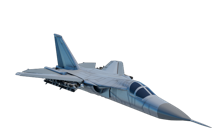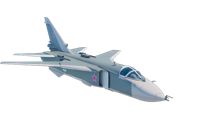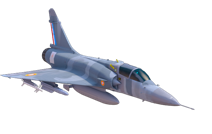Difference between revisions of "Strike Fighter"
From Conflict of Nations Wiki
| Line 1: | Line 1: | ||
<h2>Description</h2> | <h2>Description</h2> | ||
<div> | <div> | ||
| + | <div class="unit"> | ||
| + | [[File: Strike fighter a 1 big.png|thumb|class=img-unit|Western Strike Fighter]] | ||
| + | [[File: Strike fighter a 2 big.png|thumb|class=img-unit|Eastern Strike Fighter]] | ||
| + | [[File: Strike fighter a 3 big.png|thumb|class=img-unit|European Strike Fighter]] | ||
| + | </div> | ||
Strike Fighters such as the F-15 detailed below, are fixed-wing combat aircraft designed for air-to-ground attack missions. While they are well-equipped to counter air threats as well, the real value of strike fighters lie in their deep-strike capability against both soft and armored targets. They will effectively assist your ground units and clear a path to new territory acquisitions, but beware of enemy fighters or surface-to-air missiles, as they will put a definitive end to your plans. When on patrol, if they cross paths with an enemy ground target, they will adjust their course and engage. Radar cross-section (RCS) reduction measures in design prevent these machines from being detected by weak radar units. | Strike Fighters such as the F-15 detailed below, are fixed-wing combat aircraft designed for air-to-ground attack missions. While they are well-equipped to counter air threats as well, the real value of strike fighters lie in their deep-strike capability against both soft and armored targets. They will effectively assist your ground units and clear a path to new territory acquisitions, but beware of enemy fighters or surface-to-air missiles, as they will put a definitive end to your plans. When on patrol, if they cross paths with an enemy ground target, they will adjust their course and engage. Radar cross-section (RCS) reduction measures in design prevent these machines from being detected by weak radar units. | ||
Friendly and common-sense advice for beginners: "First and foremost... the pointy end toward the enemy" | Friendly and common-sense advice for beginners: "First and foremost... the pointy end toward the enemy" | ||
| Line 8: | Line 13: | ||
Strong air-to-ground bombing | Strong air-to-ground bombing | ||
Can carry 1 cruise missile | Can carry 1 cruise missile | ||
| − | Role: | + | Role: Primary bombing unit with low air damage |
| − | Primary bombing unit with low air damage | ||
| − | |||
| − | |||
| − | |||
| − | |||
</div> | </div> | ||
Revision as of 07:20, 8 March 2018
Description
Strike Fighters such as the F-15 detailed below, are fixed-wing combat aircraft designed for air-to-ground attack missions. While they are well-equipped to counter air threats as well, the real value of strike fighters lie in their deep-strike capability against both soft and armored targets. They will effectively assist your ground units and clear a path to new territory acquisitions, but beware of enemy fighters or surface-to-air missiles, as they will put a definitive end to your plans. When on patrol, if they cross paths with an enemy ground target, they will adjust their course and engage. Radar cross-section (RCS) reduction measures in design prevent these machines from being detected by weak radar units. Friendly and common-sense advice for beginners: "First and foremost... the pointy end toward the enemy"
Important to Note: Strike Fighters are weak against other aircraft, and especially vulnerable to Air Superiority Fighters, but pack a serious punch against ground targets. Strong air-to-ground bombing Can carry 1 cruise missile Role: Primary bombing unit with low air damage
Features
This unit has the following features on its final tier:
- Ranged Combat
- Radar
- Launch Cruise Missile


